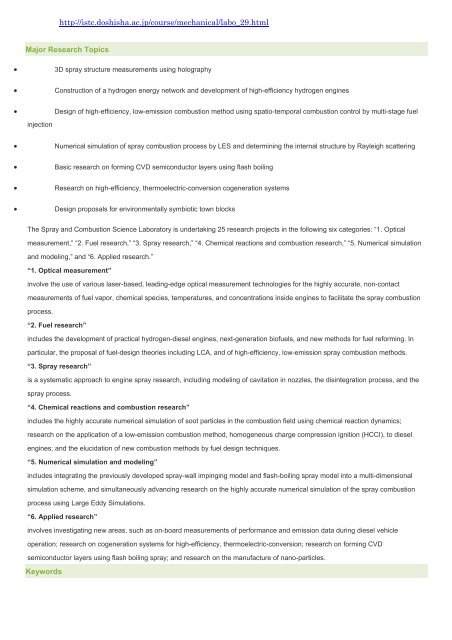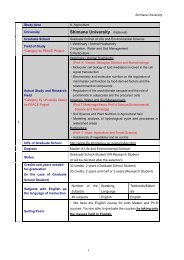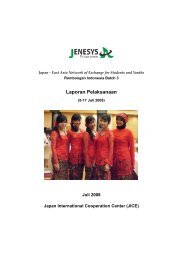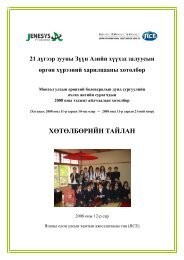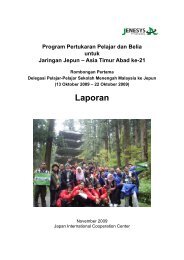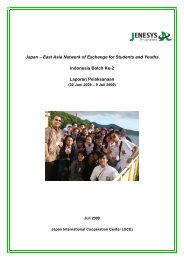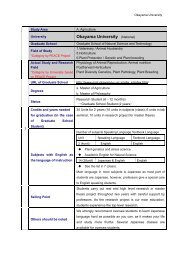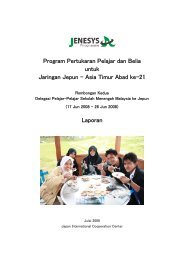Doshisha University (Private)
Doshisha University (Private)
Doshisha University (Private)
You also want an ePaper? Increase the reach of your titles
YUMPU automatically turns print PDFs into web optimized ePapers that Google loves.
http://istc.doshisha.ac.jp/course/mechanical/labo_29.html<br />
Major Research Topics<br />
<br />
<br />
<br />
3D spray structure measurements using holography<br />
Construction of a hydrogen energy network and development of high-efficiency hydrogen engines<br />
Design of high-efficiency, low-emission combustion method using spatio-temporal combustion control by multi-stage fuel<br />
injection<br />
<br />
<br />
<br />
<br />
Numerical simulation of spray combustion process by LES and determining the internal structure by Rayleigh scattering<br />
Basic research on forming CVD semiconductor layers using flash boiling<br />
Research on high-efficiency, thermoelectric-conversion cogeneration systems<br />
Design proposals for environmentally symbiotic town blocks<br />
The Spray and Combustion Science Laboratory is undertaking 25 research projects in the following six categories: “1. Optical<br />
measurement,” “2. Fuel research,” “3. Spray research,” “4. Chemical reactions and combustion research,” “5. Numerical simulation<br />
and modeling,” and “6. Applied research.”<br />
“1. Optical measurement”<br />
involve the use of various laser-based, leading-edge optical measurement technologies for the highly accurate, non-contact<br />
measurements of fuel vapor, chemical species, temperatures, and concentrations inside engines to facilitate the spray combustion<br />
process.<br />
“2. Fuel research”<br />
includes the development of practical hydrogen-diesel engines, next-generation biofuels, and new methods for fuel reforming. In<br />
particular, the proposal of fuel-design theories including LCA, and of high-efficiency, low-emission spray combustion methods.<br />
“3. Spray research”<br />
is a systematic approach to engine spray research, including modeling of cavitation in nozzles, the disintegration process, and the<br />
spray process.<br />
“4. Chemical reactions and combustion research”<br />
includes the highly accurate numerical simulation of soot particles in the combustion field using chemical reaction dynamics;<br />
research on the application of a low-emission combustion method, homogeneous charge compression ignition (HCCI), to diesel<br />
engines; and the elucidation of new combustion methods by fuel design techniques.<br />
“5. Numerical simulation and modeling”<br />
includes integrating the previously developed spray-wall impinging model and flash-boiling spray model into a multi-dimensional<br />
simulation scheme, and simultaneously advancing research on the highly accurate numerical simulation of the spray combustion<br />
process using Large Eddy Simulations.<br />
“6. Applied research”<br />
involves investigating new areas, such as on-board measurements of performance and emission data during diesel vehicle<br />
operation; research on cogeneration systems for high-efficiency, thermoelectric-conversion; research on forming CVD<br />
semiconductor layers using flash boiling spray; and research on the manufacture of nano-particles.<br />
Keywords


